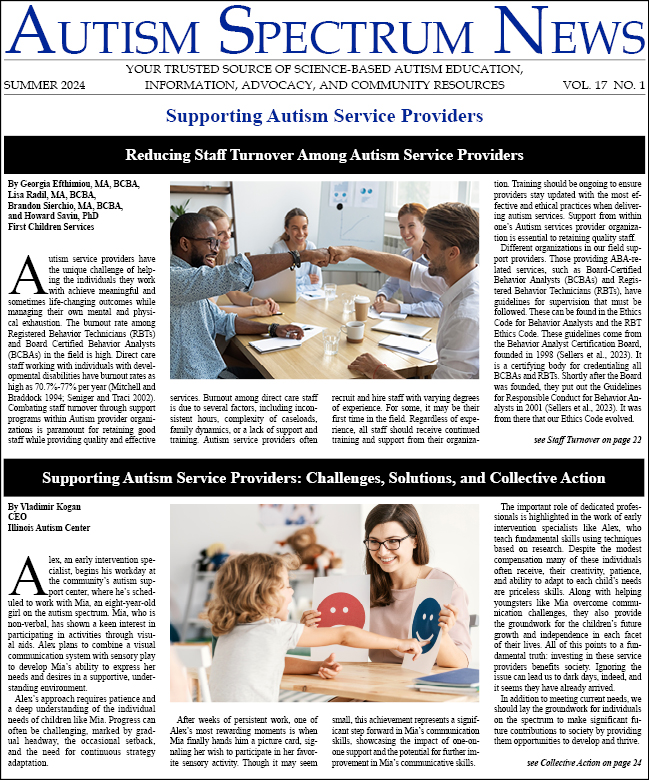-
Language Development and Communication for Nonverbal Autistic Children
Autism spectrum disorder is one that has a broad range of symptoms, but many with its diagnosis have similar “core” symptoms. Difficulties with language and communication is a shared struggle for many. Thankfully, with today’s constantly evolving technology and research, individuals with...
-
Why I Made the Difficult Decision to Not Have Children
In the last year, I have accomplished a lot. More than I used to think I could do in my life. I made a life decision never to have kids. I underwent a procedure to keep from getting pregnant. I have become a confident woman. I know what I want in my life. My decision is based on childhood...
-
Crisis Management in Children with Autism and First Responders
Children diagnosed with autism spectrum disorder (ASD) are more likely to engage in challenging behavior than their neurotypical peers. Severity of these behaviors range from mild to very severe and include topographies such as aggression, self-injury, destructive behavior, pica, and elopement...
-
Assisting Caregivers with the De-Escalation of Challenging Behaviors
Throughout my time as a special education teacher and administrator, I have always searched for ways to help my Autism Spectrum Disorder (ASD) students de-escalate themselves without having to get to a point where the use of a protective hold was needed. This was, at times, a herculean feat because...
-
Designing Environments to Reduce Challenging Behaviors
Challenging behaviors - defined as abnormal behaviors that deviate from one’s culture in frequency, intensity, or duration - are common among autistics, and have the potential to cause hardships for the autistic and others (Jang, Healy, & Mannion, 2011; Matson & Minshawi, 2007; Myers...
-
Managing Back-to-School Jitters: Tips to Help Children With Special Needs Ensure a Smooth Transition
Remember how it felt as a child before your first day of school? Perhaps you experienced butterflies in your stomach or loss of sleep the night before. You were excited to see your friends, but also nervous about what the new school year would bring. That is exactly how I am feeling about sending...
-
Smart Home Technology and Autism
Good parents worry about their children’s safety. For most, this centers on keeping toddlers away from medicine, sharp objects, electrical outlets and other physical dangers in the home. As children grow, parents can usually start worrying less about these things and focus on their children’s...
-
Robot-Assisted Instruction for Children with Autism: How Can Robots Be Used in Special Education?
In today’s high-tech world, quality teaching in special education is an essential factor that many specialists need to fulfill. Special education teachers are well-trained and often receive the latest skills and resources to provide effective intervention for children with autism. However, high...
-
The Importance of Friendship for Youth with Autism: Strategies for Finding Friends
Childhood loneliness has life-long consequences. Children who do not have friends are at higher risk for anxiety and depression as they get older which can lead to life-long mental health and medical problems (Hawkley, L. C., & Cacioppo, J. T., 2010). Even having just one friend can be a...
-
Supporting Autistic Children: Much Has Been Learned Since My Childhood
Having been diagnosed on the autism spectrum as an older adult, I was certainly not aware of this condition during my childhood, nor was anyone else in my life including family, school officials, or healthcare professionals. At the time there was no public awareness about autism to speak of (it was...





